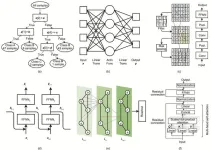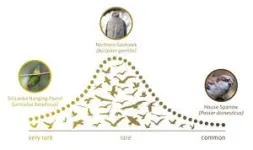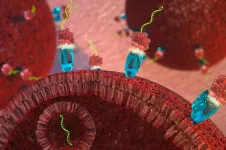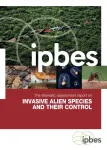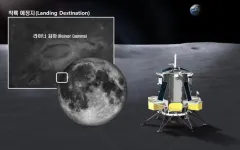Innovative solutions for chemical challenges: Harnessing the potential of machine learning
2023-09-04
(Press-News.org)
In a review published in Engineering, scientists explore the burgeoning field of machine learning (ML) and its applications in chemistry. Titled “Machine Learning for Chemistry: Basics and Applications,” this comprehensive review aims to bridge the gap between chemists and modern ML algorithms, providing insights into the potential of ML in revolutionizing chemical research.
Over the past decade, ML and artificial intelligence (AI) have made remarkable strides, bringing us closer to the realization of intelligent machines. The advent of deep learning methods and enhanced data storage capabilities has played a pivotal role in this progress. ML has already demonstrated success in domains such as image and speech recognition, and now it is gaining significant attention in the field of chemistry, which is characterized by complex data and diverse organic molecules.
However, chemists often face challenges in adopting ML applications due to a lack of familiarity with modern ML algorithms. Chemistry datasets typically exhibit a bias towards successful experiments, while a balanced perspective necessitates the inclusion of both successful and failed experiments. Furthermore, incomplete documentation of synthetic conditions in literature poses additional challenges. Computational chemistry, where datasets can be reliably constructed from quantum mechanics calculations, has embraced ML applications more readily. Nonetheless, chemists need a basic understanding of ML to harness the potential of data recording and ML-guided experiments.
This review serves as an introductory guide to popular chemistry databases, two-dimensional (2D) and three-dimensional (3D) features used in ML models, and popular ML algorithms. It delves into three specific chemistry fields where ML has made significant progress: retrosynthesis in organic chemistry, ML-potential-based atomic simulation, and ML for heterogeneous catalysis. These applications have either accelerated research or provided innovative solutions to complex problems. The review concludes with a discussion of future challenges in the field.
The rapid advancement of computing facilities and the development of new ML algorithms indicate that even more exciting ML applications are on the horizon, promising to reshape the landscape of chemical research in the ML era. While the future is difficult to predict in such a fast-evolving field, it is undeniable that the development of ML models will lead to enhanced accessibility, generality, accuracy, intelligence, and ultimately, higher productivity. The integration of ML models with the Internet offers a promising avenue for sharing ML predictions worldwide.
However, the transferability of ML models in chemistry poses a common challenge due to the diverse element types and complex materials involved. Predictions often remain limited to local datasets, resulting in decreased accuracy beyond the dataset. To address this issue, new techniques such as the global neural network (G-NN) potential and improved ML models with more fitting parameters are being explored. While ML competitions in data science have produced exceptional algorithms, there is a need for more open ML contests in chemistry to nurture young talent.
Excitingly, end-to-end learning, which generates final output from raw input rather than designed descriptors, holds promise for more intelligent ML applications. AlphaFold2, for example, utilizes the one-dimensional (1D) structure of a protein to predict its 3D structure. Similarly, in the field of heterogeneous catalysis, an end-to-end AI model has successfully resolved reaction pathways. These advanced ML models can also contribute to the development of intelligent experimental robots for high-throughput experiments.
As the field of ML continues to evolve rapidly, it is crucial for chemists and researchers to stay informed about its applications in chemistry. This review serves as a valuable resource, providing a comprehensive overview of the basics of ML and its potential in various chemistry domains. With the integration of ML models and the collective efforts of the scientific community, the future of chemical research holds immense promise.
The paper “Machine Learning for Chemistry: Basics and Applications” has been published in Engineering, authored by Yun-Fei Shi, Zheng-Xin Yang, Sicong Ma, Pei-Lin Kang, Cheng Shang, P. Hu, Zhi-Pan Liu. Full text of the open access paper: https://doi.org/10.1016/j.eng.2023.05.013. For more information about the Engineering, follow us on Twitter (https://twitter.com/EngineeringJrnl) & Like us on Facebook (https://www.facebook.com/EngineeringPortfolio).
END
ELSE PRESS RELEASES FROM THIS DATE:
2023-09-04
Around 5.2% of the global population carries abnormal hemoglobin genes [1]. Each year, 300,000 to 500,000 children are born with severe hemoglobinopathies worldwide, with approximately 80% of these cases occurring in developing countries [2]. Thalassemia is the most common hereditary hemoglobinopathy and occurs in 4.4 out of every 10,000 live births [3]. It is prevalent in Mediterranean coastal areas, Africa, the Middle East, Southeast Asia, and southern China.
A previous study indicated that Ganzhou, the southernmost city in Jiangxi province, had a thalassemia prevalence ...
2023-09-04
Abu Dhabi, UAE (September 4, 2023) – In a breakthrough in cancer therapeutics, a team of researchers at the Magzoub Biophysics Lab at NYU Abu Dhabi (NYUAD) has made a significant advance in light-based therapies – biocompatible and biodegradable tumor-targeting nanospheres that combine tumor detection and monitoring with potent, light-triggered cancer therapy to dramatically increase the efficacy of existing light-based approaches.
Non-invasive, light-based therapies, photodynamic therapy (PDT) and photothermal therapy (PTT) have the potential to be safe and effective alternatives to conventional cancer treatments, which are beset by a ...
2023-09-04
Traditionally, the impact of human activity on an ecosystem has lacked context when planning restorative ecosystem mitigation and management strategies. Multiple human activities over time and space, the resilience of a particular ecosystem, and the stress caused by many individual or related, overlapping activities that generate cumulative effects may affect the overall "ecosystem response footprint," or ability of an ecosystem to adapt and change to human activity.
A team of marine scientists reviewed the most recent perspectives on ecological footprints to rigorously define the term "ecosystem response footprint" as the ...
2023-09-04
WEST LAFAYETTE, Ind. – A new cancer therapy developed by Purdue University researchers attacks tumors by tricking cancer cells into absorbing a snippet of RNA that naturally blocks cell division. As reported today in Oncogene, tumors treated with the new therapy did not increase in size over the course of a 21-day study, while untreated tumors tripled in size over the same time period.
Cancer can begin almost anywhere in the human body. It is characterized by cells that divide uncontrollably and that may be able to ignore signals to ...
2023-09-04
The severe global threat posed by invasive alien species is underappreciated, underestimated, and often unacknowledged. According to a major new report by the Intergovernmental Platform on Biodiversity and Ecosystem Services (IPBES), more than 37,000 alien species have been introduced by many human activities to regions and biomes around the world. This conservative estimate is now rising at unprecedented rates. More than 3,500 of these are harmful invasive alien species – seriously threatening nature, nature’s contributions to people and good quality of life. Too often ignored until it is too late, invasive alien species are a ...
2023-09-04
The Ministry of Science and ICT (Minister Jong-Ho Lee, hereinafter referred to as 'MSIT') and the Korea Astronomy and Space Science Institute (Director Young-Deuk Park, hereinafter referred to as 'KASI') announced the beginning of the transfer of the lunar space environment monitor, 'LUSEM'(Lunar Space Environment Monitor) that will be aboard United States’ unmanned lunar lander in 2024, has began on September 4th.
LUSEM is a payload developed by the Korea Astronomy and Space Science Institute (KASI) in participation with the U.S. NASA's CLPS(Commercial Lunar Payload Services) initiative ...
2023-09-04
IOP Publishing (IOPP) has appointed Dr. David Gevaux as the first Chief Editor of Reports on Progress in Physics. Taking up the post from the 4th of September, Dr. Gevaux will lead on ambitious plans for the journal, as its scope expands to include groundbreaking new research content alongside the authoritative reviews for which it is well known across all areas of physics.
Working closely with Professor Subir Sachdev, the Editor in Chief of Reports on Progress in Physics, Dr. Gevaux will champion the editorial ...
2023-09-04
The Qing Dynasty in China, after over 250 years, crumbled in 1912. Led by the Complexity Science Hub (CSH), an international research team has pinpointed key reasons behind the collapse, revealing parallels to modern instability and offering vital lessons for the future.
China is considered today to be the world's largest economy (in terms of PPP). However, this position is not new. In 1820, China's economy already held the top spot, accounting for 32.9% of the global GDP. In the interim, there was a period of decline followed by a resurgence. In 1912, after over 250 years in power, the Qing Dynasty collapsed despite being considerably wealthier at the time ...
2023-09-04
Scientists from Queen Mary University of London have discovered two new genes that cause head and neck cancer patients to be resistant to chemotherapy, and that silencing either gene can make cancer cells previously unresponsive to chemotherapy subsequently respond to it.
The two genes discovered actively ‘work’ in most human cancer types, meaning the findings could potentially extend to other cancers with elevated levels of the genes.
The researchers also looked through a chemical library, commonly used for drug discovery, and found two substances that could target the two genes specifically and make resistant cancer cells almost 30 times more sensitive to ...
2023-09-04
Digital information exchange can be safer, cheaper and more environmentally friendly with the help of a new type of random number generator for encryption developed at Linköping University, Sweden. The researchers behind the study believe that the new technology paves the way for a new type of quantum communication.
In an increasingly connected world, cybersecurity is becoming increasingly important to protect not just the individual, but also, for example, national infrastructure and banking systems. And there is an ongoing race between hackers and those trying to protect information. The most common way ...
LAST 30 PRESS RELEASES:
[Press-News.org] Innovative solutions for chemical challenges: Harnessing the potential of machine learning
